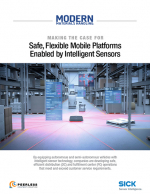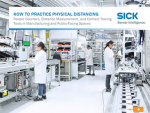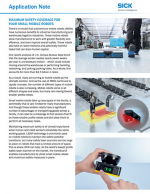Reducing Risk on Industrial Machinery
This white paper series is intended as an introduction and overview of the The American National Standards Institute (ANSI) B11.19 standard.
Part 1 of 6 in a series addressing the new edition (2019) of ANSI B11.19
The American National Standards Institute (ANSI) is the United States’ national member body to the International Organization for Standardization (ISO) and International Electrotechnical Commission (IEC).
It coordinates the participation and input of the United States in the development of international standards (such as ISO/IEC). ANSI also accredits organizations to develop standards for use within the US, according to procedures called Essential Requirements.
According to ANSI
[ANSI] is a decentralized system that is naturally partitioned into industrial sectors and supported by independent, private sector standards developing organizations (SDOs) and conformity assessment bodies.
It is a demand-driven system in which standards are created in response to specific concerns and needs expressed by industry, government, and consumers. And it is a voluntary system in which both standards development and compliance are driven by stakeholder needs. One of its hallmarks is a direct linkage to the ever-evolving marketplace.
More than 11,000 American National Standards (ANS) exist in the US, with many applying to the safety of people working with industrial equipment. Of these, one of the most essential, and broadly applicable, is ANSI B11.19 – Performance Requirements for Risk Reduction Measures. This standard is part of the B11 series of machinery safety standards, and applies to power driven industrial machinery which are not portable by hand while working.
This includes, “an assembly of linked parts or components (at least one of which moves) with the appropriate actuators, control, and power circuits, etc., that are joined together for a specific application such as, for the processing, treatment, marking, or moving of material.”
This standard is developed as a type-B standard applicable across a broad range of industries. (See the previous SICK white paper, Selecting Safety Standards for Machine Safeguarding Requirements, for further description of this stratification system.)
This white paper series is intended as an overview of the standard. True value can only be gained by obtaining and thoroughly reviewing its content. The standard is available now from various technical document providers, including directly from the ANSI webstore.
While interpretation and application of the many standards may be cumbersome at times, qualified consultants are available to assist for each unique application, including SICK Services.
What’s Related




Favorites





